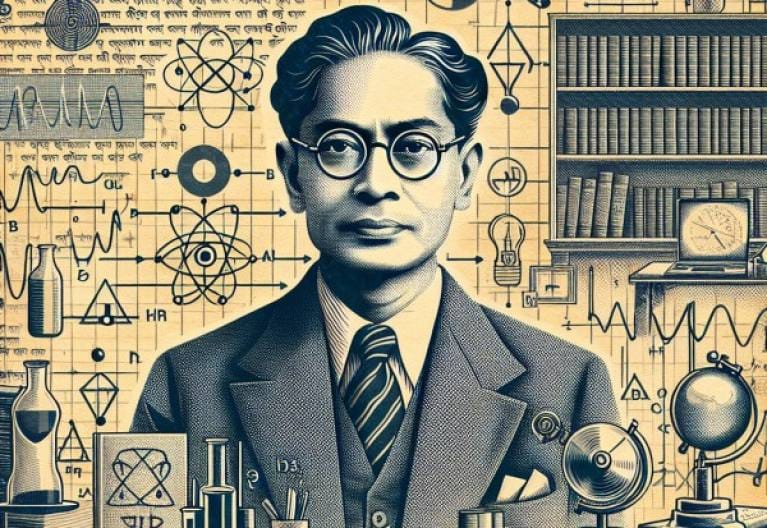Introduction
Bankim Chandra Chattopadhyay, a luminary in the annals of Bengali literature, stands as an intellectual giant whose contributions transcended the literary realm, making an indelible mark on the socio-cultural and political fabric of 19th-century India.
Born on June 26, 1838, in the quaint village of Kanthalpara, near Naihati, Bengal, his life’s journey unfolds as a riveting narrative of literary brilliance, profound social consciousness, and a fervent commitment to the cause of Indian nationalism.
Early Life and Education:
Birth and Family Background:
- Hailing from an orthodox Brahmin family, Bankim Chandra’s early years were steeped in tradition and cultural richness.
- His father, Jadab Chandra Chattopadhyay, a government official, and his mother, Durgadevi, a woman of devout spirituality, laid the foundation for his early values.
Educational Odyssey:
- Commencing his educational voyage in Naihati, Bankim’s intellectual curiosity thrived.
- The family’s move to Midnapore exposed him to diverse cultural influences, shaping his worldview.
- Graduating in Arts from the University of Calcutta in 1857, he demonstrated early signs of literary prowess.
Civil Service Stint:
- Embracing a career in the British Indian civil service, Bankim held various administrative roles across the country.
- Despite his bureaucratic responsibilities, his passion for literature and cultural heritage remained an enduring flame.
You May Like:- How to Win Friends and Influence People by Dale Carnegie- Book Summary
Literary Odyssey:
Debut Novel – “Durgeshnandini” (1865):
- Bankim’s literary journey commenced with the historical novel “Durgeshnandini,” an instant success that paved the way for his ascendancy in the literary echelons.
Prolific Novelist:
- Subsequent novels, including “Kapalkundala,” “Mrinalini,” “Vishabriksha,” and “Debi Chaudhurani,” showcased his narrative brilliance and thematic diversity.
Magnum Opus – “Anandamath” (1882):
- “Anandamath” stands as a magnum opus where Bankim introduces the powerful hymn, “Vande Mataram.”
The iconic verses of “Vande Mataram” became a rallying cry during the Indian independence movement, capturing the essence of the nation’s fervor for freedom.
Nationalism and Social Thought:
Catalyst for Indian Nationalism:
- Bankim Chandra emerged as a vanguard of Indian nationalism through his literary works.
- His writings became instrumental in arousing patriotic sentiments and fostering a sense of unity among diverse communities.
Synthesis of Social and Religious Ideas:
- His literary canvas portrayed a harmonious synthesis of traditional Hindu philosophy and contemporary ideas.
- Addressing social issues, Bankim advocated for cultural resurgence as a response to the challenges posed by colonial rule.
You May Like:- APJ Abdul Kalam: The Inspiring Rocket Scientist of India
Journalism and Editorial Stewardship:
Editorial Ventures:
- Taking on editorial responsibilities for influential publications like ‘Bangadarshan’ and ‘Dharma Tattva,’ Bankim utilized these platforms for articulating his views on societal, cultural, and political matters.
- His editorials became intellectual bastions, reflecting his insightful perspectives.
Later Years and Legacy:
Retirement and Continued Literary Contributions:
- Retiring from the civil service in 1891, Bankim dedicated the latter part of his life to his literary pursuits.
- His later works, marked by intellectual depth, continued to resonate with societal issues and cultural reflections.
Enduring Legacy:
- Bankim Chandra Chattopadhyay’s legacy extends far beyond literature, encompassing realms of Indian nationalism, cultural revival, and philosophical thought.
- His influence remains palpable, and his literary creations continue to inspire generations.
Conclusion:
In the tapestry of Indian literary history, Bankim Chandra Chattopadhyay emerges as a towering figure, a maestro whose pen wielded not only the power of storytelling but also the resonance of a nationalistic fervor. His life’s journey, from the quaint village of Kanthalpara to the forefront of India’s struggle for independence, exemplifies the symbiotic relationship between literature and the socio-political landscape.
Bankim Chandra Chattopadhyay, the literary beacon, lives on as a testament to the enduring spirit of an artist who transcended the boundaries of his craft to shape the destiny of a nation.
You May Like:- Unleashing Your Potential: Mastery by Robert Greene Read Full Summary & Key Lessons





